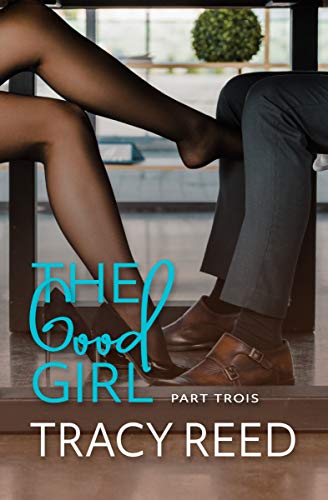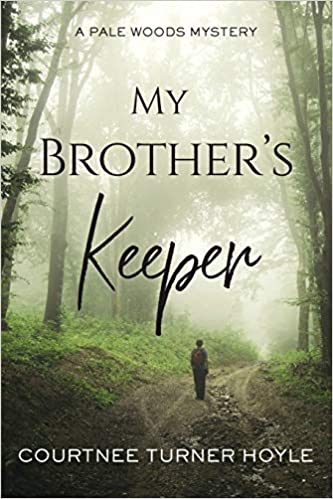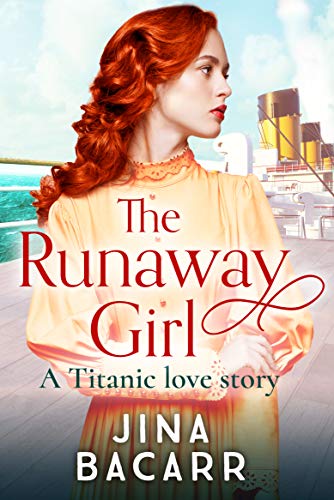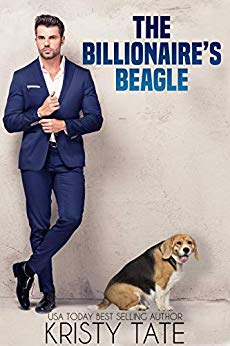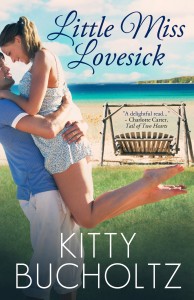4 Ways to Meet Your Writing Goals
October 9, 2012 by A Slice of Orange in category Archives tagged as It's Worth It, Kitty Bucholtz, Routines for WritersYou may know this has been a hard year for me. Over at my blog, Routines for Writers, it’s been a hard year for all of us. We’ve talked about how to keep going, both personally and professionally. We’ve discussed whether we have any more to offer our readers or whether Routines for Writers has run its course. All three of us have struggled to keep writing through a variety of personal and professional setbacks.
There are so many cliches we could offer each other, and you, to keep writing and not give up. But here are four solid things you can do now, or anytime you need a boost, to keep going and accomplish your writing goals.
(I didn’t mean for this to be so long, but I wanted to share with you what has worked for me. Go to the end for the bullet points if you’re short on time, and come back and read the full post when you have time. 🙂 )
Writing Routines
You can tell from the title of our blog that Shonna and Stephanie and I strongly believe in routines in general, and writing routines in particular. Routines are habits you are acquiring on purpose. I choose to routinely run three days a week because I have a goal of beating my best time in the half marathon I signed up for in January. My habit thus far has been to overeat and carry a lot of extra weight that is not helping me with my running. For my January race goal, I have identified one routine, and one bad habit that I need to change into a positive routine.
In my writing, I have several goals regarding getting my current book into print format, getting my next book out as an ebook and in print, and submitting my superhero novel to Harper Voyager during their open submission period this week. In addition, my 2012 goals include increasing traffic to my web site/blog, creating more online classes to teach in 2013, and learning how to promote my books to increase sales.
It’s great to have goals, but you need to have a plan, too. Just like in Shonna’s post last Friday, I take my big goals and work backwards to break them down into pieces so I know what needs to be done every month to make the goals a reality at the end of the year. When I’ve got that list of monthly goal pieces written down, I can create routines that work for me that will turn the goal pieces into accomplishments. For instance, when my life was calmer, I wrote four days a week and did all my business-of-writing stuff on Fridays. It’s less important what you choose to do, perhaps, than that you create a routine that moves you toward your goal at a pace you can keep up.
Using the “It’s a marathon, not a sprint” metaphor, let me tell you that the training programs for running marathons and half marathons (I only do half’s) suggests running moderately short distances several days a week, increasing your distance slowly, and doing one longer run on the weekend. So I might run four or five miles a day three days a week, then an 8-mile run on Saturday. More 5-mile runs the next week, and then 9 or 10 miles that Saturday. This is the kind of schedule that you can keep up even if you have to get to work in the morning. And it’s a good parallel for making a writing routine as well.
Periodic Reevaluations
When life is going smoothly (or monotonously, depending on your perspective), it can be difficult to remember to check your progress against your goals before the year is up. Several of my friends and I have an unhelpful tendency to wait until November or December, then freak out and try to cram all the rest of the work into the busiest time of the year. Brilliant.
When I teach my goal setting and time management class (coming again in January), I encourage people to check their goals after a month to see if they were on a “get it done” high when they wrote out their list. 🙂 Then I suggest quarterly reviews, taking 15 minutes to see how close you are to where you’d planned to be. At these checkpoints, we can decide if we think we should readjust our goals, and do so if necessary.
Remember, goal setting is about making progress toward something you want. It is not about beating yourself up for what you haven’t accomplished! You need to sit down and think about why you haven’t accomplished what you set out to do, but only because you need to decide if you should change course or just change tactics. You also need to reward yourself for what you have accomplished. That will give you energy to keep on going. (I started a “Done” journal a year or two ago. I write down all my writing-related work that I do on any given day, bullet-point style so I can scan it easily. I haven’t done half of what I’ve set out to do, but I’ve done a LOT and the Done journal helps me stay upbeat.)
Willingness to Change
Depending on how your reevaluations go, you may decide you want to make some changes. It may be that your goals are fine, but the way you are going about trying to accomplish them needs to change. For instance, say you decide to take someone’s advice to get up an hour early to write every day, and two months into that new routine you are exhausted and cranky. You’ve got your pages, but people have started to avoid you.
You may decide that you need to write for half an hour during your lunch break, and half an hour in the car before you come home from work. That way you are getting the sleep you need, and no one feels like you’re ignoring them. I wrote part of Little Miss Lovesick that way. I find it almost impossible to ignore my husband – we’re like little kids who just want to play when we’re together – and this way I made my goals quickly because there’s an end to my lunch break (hurry!) and the car is not an easy place to type and I’m hungry (hurry!).
This weekend, I did a periodic reevaluation for a different reason. My life has been in constant upheaval this year (and for much longer, really) and I knew I wasn’t going to make all my 2012 goals. I needed to see where I was and figure out what was most important to me to get done before the end of the year. I looked at the big picture and monthly goals for 2012 and sighed. Heavily. Then I wrote down what I most want to accomplish before the end of the year. Yikes! It’s still a lot! But I dropped several projects on my original goals list, promising myself I’d look into whether I still wanted to pursue them next year.
Due to my husband’s unemployment and our recent dedication to following through with our Financial Peace University goals, I’ve taken on some outside work. For every hour I take out of my writing week, I’ll have to make some adjustments to either personal time that will become writing time, and/or decrease my 2012 goals again. I just have to keep reminding myself that I’m willing to make changes now to accomplish big picture goals in my “regular” life as well as my writing life.
Decide Now to Keep Going Later
Perhaps one of the best things you can do to help you meet your writing goals is to decide now not to quit when it gets tough. Life is an ebb and flow of good and bad, hard and easy. When times get tough, what is your plan?
Yes, a plan will help you not to quit.
My plan for this particular hard time was to not quit writing altogether, to not focus entirely on the areas of life calling for my attention. My plan was to let writing time decrease, but to make sure I was still making progress every week. Every baby step counts, and I have to keep reminding of myself of that.
My current plan is to work on my writing career with “gazelle intensity” – a Dave Ramsey term he uses to get people totally focused on getting out of debt. When I’m not juggling bills or working temp jobs, I’m working 10-12 hour days to get back on track. I’m giving up some of my personal time and time with John (he supports this – yay!) and I’m focusing on making up some lost time. I started this a few weeks ago and I couldn’t believe how much I got done. I’m exhausted a lot, but it’s worth it because I’m seeing progress already. (I strongly recommend you take at least one full day off from work a week if you decide to do this. You need a full battery each week to keep up this kind of pace.)
The reason I recommend a plan for what you’re going to do when life takes some (or nearly all) of your writing time, and a plan for what to do if you get a windfall of time, is that you can be prepared and make good decisions that much quicker. A few years ago I walked one step at a time into a very deep writing rut. I didn’t know how to get out of it and I didn’t know who to talk to about it. I stopped writing, for the most part, pretending to most of my peers that I was still working away. But I bet I didn’t write 5000 words (outside of my blog) that whole year.
Ouch. If only I’d had a plan for what to do when something like that happened. But because I learned from that experience, when my mom died this year, and so many other pieces of my life seemed to fall apart, I had an idea about how to survive and continue. I decided back then that I would keep going now.
Bullet Points
To meet your writing goals, you need to:
- Create writing routines that help you to keep going, step after step after step, getting a little done at a time so that you accomplish your annual goals by the end of the year
- Periodically reevaluate your goals and your progress, at least quarterly, deciding if you need to make any changes
- Be willing to make changes, either to your goals and/or your tactics in trying to accomplish your goals
- Decide now what your plan is to not quit later when times are tough, and another plan for what you’ll do with extra time
I hope you take some time to reevaluate your goals and tactics this week. What can you reasonably accomplish in the next three months? Good luck! I’m rooting for you!
Kitty Bucholtz decided to combine her undergraduate degree in business, her years of experience in accounting and finance, and her graduate degree in creative writing to become a writer-turned-independent-publisher. Her first novel, Little Miss Lovesick, was released in September 2011 as an ebook and will be available soon in print format. Kitty has also written magazine articles, devotionals, and worked as a magazine editor. She is the co-founder of Routines for Writers where she blogs every Monday. Her next novel, Love at the Fluff N Fold, will be released in late 2012.
0
0 Read more
My Creativity is Currently in the Warehouse (13)
August 9, 2012 by A Slice of Orange in category Archives tagged as creativity, goodreads, It's Worth It, Kitty Bucholtz, Routines for Writers, TV, What Inspires You I’m on a Warehouse 13 marathon right now. Even though we’re watching episodes we’ve seen, starting at Season 1, Episode 1, I still love it. That’s the great thing about stories you love. You can enjoy them over and over again.
I’m on a Warehouse 13 marathon right now. Even though we’re watching episodes we’ve seen, starting at Season 1, Episode 1, I still love it. That’s the great thing about stories you love. You can enjoy them over and over again.The other thing about stories you love is that they inspire creativity. Watching episode after episode of Pete and Myka grousing at each other, competing with each other, and always having each other’s back presses all my creative buttons. When Pete asked Myka if she was afraid they were the Red Shirts, and she said yes, John and I laughed out loud when Pete replied, “First, we aren’t going to die. Second, I’m so pumped you know what that means.” [paraphrased]
Over the last 20 episodes, I’ve gone from just enjoying the show for its own sake to thinking about my work and how I can make it funnier, more interesting, tense without being over-serious, adding death and destruction if necessary without a Law & Order feel. All the artifacts and the things that they do make me think about what I can add to my stories, whether fantastical stories or “regular” ones.
One of the “ah-ha” moments in creating my current romantic comedy series, Strays of Loon Lake (Love at the Fluff and Fold, book one in the series, will be out later this year), was when I decided that a local dog was the frisky father of a lot of puppies in town. Suddenly I had this funny element that I could play up.
In addition to a lot of TV watching, I’ve upped my hours of reading lately. It feels soooo much better to be reading more, like I’m eating healthier or something. I’m reading a lot of nonfiction on writing, self-publishing, and neuroscience. But I’m also reading a lot more fiction than I have in the last year or so. I’ve been reading inspirational, historical and contemporary romance, young adult books, paranormal and urban fantasy books and short stories, some horror, and some suspense. (Trying to track it all on Goodreads, but forgetting to add every book.)
Now here’s a chicken-and-egg thought: in the midst of this burst of desire to pull creative stories IN, I’ve also been writing more, getting creative stories OUT. Did the extra reading inspire me to write more? Or did the deadlines for the two anthologies I’m in push me to gobble up more stories for inspiration? My answer is YES.
 Add to all that, my jump from wanting to know more about how the brain works to finding books explaining it to me, and I’ve added yeast to the bread mix. I mean that in terms of rising and growing, not in terms of becoming gaseous and fermenting. Though the fermenting part is making me think of wine, which reminds me of living in Australia, which reminds me of some of the unexpectedly creative pieces I wrote in uni. (Now that I have Australia-brain, my brain is using Australian terms. “Uni” is short for university, i.e., my master’s in creative writing program.) And using Aussie vocabulary reminds me of my friends whom I miss terribly, which reminds me I was going to call Verizon this week and get that international calling plan, which makes me think about having some international characters in my superhero novels, which makes me think of the Cowboy character I created for a short story that went nowhere. Now I just need to figure out how to get an Australian superhero named Cowboy, and his super horse, across the ocean to Michigan where my superheroes are living.
Add to all that, my jump from wanting to know more about how the brain works to finding books explaining it to me, and I’ve added yeast to the bread mix. I mean that in terms of rising and growing, not in terms of becoming gaseous and fermenting. Though the fermenting part is making me think of wine, which reminds me of living in Australia, which reminds me of some of the unexpectedly creative pieces I wrote in uni. (Now that I have Australia-brain, my brain is using Australian terms. “Uni” is short for university, i.e., my master’s in creative writing program.) And using Aussie vocabulary reminds me of my friends whom I miss terribly, which reminds me I was going to call Verizon this week and get that international calling plan, which makes me think about having some international characters in my superhero novels, which makes me think of the Cowboy character I created for a short story that went nowhere. Now I just need to figure out how to get an Australian superhero named Cowboy, and his super horse, across the ocean to Michigan where my superheroes are living.And THAT is how creativity so often works. It’s a bunch of very quick, sometimes illogical jumps in the synapses of the brain that lead from one idea to another. The more you allow and train your brain to make these jumps, the more creative you can be. Sometimes you can even get more creative more quickly.
Many writers have named the part of their unconscious that does this work. Jennifer Crusie calls her unconscious “the girls in the basement” I believe. Anne Lamott says in Bird by Bird that her friend Carpenter says there is a little boy in the cellar handing up characters through the cellar door.
I get this “down below consciousness” idea, but I’ve rarely, if ever, been in a basement that made me feel happier than any other room in the building (even the very cool basement of the State Library of New South Wales isn’t as awesome as the Shakespeare Room there; that’s a room I could be locked in forever!), and I’ve never been in a cellar that I wanted to stay in for hours. (Not even a wine cellar.)
I had problems being nice to that creative part of myself. I found myself whipping it to give me more, faster. It didn’t produce much, so I whipped it more. Then I read and really got the idea that you needed to be nice for the unconscious to flow. But basements and cellars didn’t seem that nice to me.
So I created a character named Katie, a little girl about 10 or 12 who plays in the sunroom or in the huge beautifully well-kept backyard. (I live in a small apartment.) Katie loves to read and watch TV and movies that make her laugh or make her a little scared but that always end well. She likes to pretend after the movie or book ends that she is the hero who vanquished the enemy and tamed (rather than killed) the dragon. Or she is the heroine who helps the hero save the day and they live together happily ever after.
 I like Katie. I like her so much that I like to play with her even though she’s a little girl and I’m a grown
I like Katie. I like her so much that I like to play with her even though she’s a little girl and I’m a grown As it turns out, both Katie and I love watching Warehouse 13, and mostly for the same reasons. Katie is giving me ideas about “artifact”-like things I can put in our stories. She wants me to put in more pop culture references like Red Shirts to make people who get the jokes laugh. I tell Katie this is too much work, I’d have to do more research, keep better notes, and I remind her that I too often lose my notes-on-napkins anyway so really–
Katie interrupts me with some cute begging and funny faces and tells me that surely these touches will make me really famous and make me heaps of money and (she knows this is the coup de grace) I’ll make people laugh.
I think about it and then consider the alternative. But what if I don’t make people laugh, Katie? What if they think it’s dumb?
And in her properly outraged 10-year-old voice, she shouts, “Then they’re dumb!”
I laugh and shake my head and agree to try harder to be cute and funny like her. And then I start writing and…well, Katie and I like the results.
What about you? Where does your creativity come from?
Kitty Bucholtz decided to combine her undergraduate degree in business, her years of experience in accounting and finance, and her graduate degree in creative writing to become a writer-turned-independent-publisher. Her first novel, Little Miss Lovesick, was released in September 2011 as an ebook and will be available soon in print format. Kitty has also written magazine articles, devotionals, and worked as a magazine editor. She is the co-founder of Routines for Writers where she blogs every Monday. Her next novel, Love at the Fluff N Fold, will be released in late 2012.
3
0 Read more
My Author Crush Faves
March 9, 2012 by A Slice of Orange in category Archives tagged as Cat Weatherill, Dr. Debra Holland, It's Worth It, Jacqueline Diamond, James Scott Bell, Janice Cantore, Kathleen Wright, Kitty Bucholtz, Lauraine Snelling, PJ Sharon, Routines for Writers, Stephanie S. Saunders What a great month! I love Author Crush month at Routines for Writers. There is always someone you never heard of who becomes a new fave. I might’ve picked up three new favorites!
What a great month! I love Author Crush month at Routines for Writers. There is always someone you never heard of who becomes a new fave. I might’ve picked up three new favorites!After reading Cat Weatherill’s blog post, I downloaded the Kindle sample of her book Wild Magic and fell in love! I absolutely must buy her book! Just reading a few pages of it, I became immersed in not just a magical story world, but an overwhelming sense of magic washing over me. I stopped reading several times and asked myself, how did she do that?! I’m totally going to keep reading and try to figure it out. I want my books to instill that sense of the magical!
Similarly, when I read the Kindle sample for Stephanie S. Saunders’ Villain School: Good Curses Evil, I was laughing out loud more than I was reading silently! Another must-buy for me!
The title alone made me curious about PJ Sharon’s upcoming release, Savage Cinderella. But reading the blurb on it, I’m hooked. I’ve got to give that one a try as soon as it comes out! (Release day is March 15.)
The rest of the posts this month had all kinds of new and interesting thoughts to consider.
James Scott Bell made me wonder if should give a little more thought to writing short stories. Hmm, something to think about.
Reading Jacqueline Diamond’s post about making her own book covers made me want to give it a try, if only for the fun of it.
Art Holcomb gave me a lot to think about with his thoughts on plotting the larger arc for a series, and how I need to stay enthusiastic about my story in order to write a great book.
 Thanks to Gail Carson Levine, I am more determined to write wherever I have to, whenever I have to. I was ten minutes early for Bible study this week, so I turned on the inside light in the car, and wrote another few lines of my latest short story.
Thanks to Gail Carson Levine, I am more determined to write wherever I have to, whenever I have to. I was ten minutes early for Bible study this week, so I turned on the inside light in the car, and wrote another few lines of my latest short story.Debra Holland’s self-publishing journey is always inspiring, no matter how many times I read about it. Go Debra!
I loved that I’m not the only one who picks out just the right pretty or quirky notebook for my next story. Thanks, Nancy Rue!
And Stephanie’s posts about the books she’s reading that help her in her journey toward healing – well, I admire her so much for making it a public journey so that others might be helped as well.
Even though they aren’t really part of Author Crush month, per se, I also am tickled to death that my dear friends Janice Cantore, Lauraine Snelling and Kathleen Damp Wright put bookends to our month with fantastic tales of newly published novels!
Ahh, what a great month! I always feel so refreshed and excited and motivated by March 1! I hope you take a look at some of these posts and get inspired, too! 🙂
P.S. Remember to tune in to Routines for Writers on the first Tuesday of each month and welcome our new monthly contributor, Jamie Raintree!
Kitty Bucholtz decided to combine her undergraduate degree in business, her years of experience in accounting and finance, and her graduate degree in creative writing to become a writer-turned-independent-publisher. Her first novel, Little Miss Lovesick, was released in September 2011 as an ebook and will be available soon in print format. Kitty has also written magazine articles, devotionals, and worked as a magazine editor. She is the co-founder of Routines for Writers where she blogs every Monday. Her next novel, Love at the Fluff N Fold, will be released in Spring 2012.
3
0 Read more
Affiliate Links
A Slice of Orange is an affiliate with some of the booksellers listed on this website, including Barnes & Nobel, Books A Million, iBooks, Kobo, and Smashwords. This means A Slice of Orange may earn a small advertising fee from sales made through the links used on this website. There are reminders of these affiliate links on the pages for individual books.
Search A Slice of Orange
Find a Column
Archives
Featured Books
Newsletter
Contributing Authors
Search A Slice of Orange
Find a Column
Archives
Authors in the Bookstore
- A. E. Decker
- A. J. Scudiere
- A.J. Sidransky
- Abby Collette
- Alanna Lucus
- Albert Marrin
- Alice Duncan
- Alina K. Field
- Alison Green Myers
- Andi Lawrencovna
- Andrew C Raiford
- Angela Pryce
- Aviva Vaughn
- Barbara Ankrum
- Bethlehem Writers Group, LLC
- Carol L. Wright
- Celeste Barclay
- Christina Alexandra
- Christopher D. Ochs
- Claire Davon
- Claire Naden
- Courtnee Turner Hoyle
- Courtney Annicchiarico
- D. Lieber
- Daniel V. Meier Jr.
- Debra Dixon
- Debra H. Goldstein
- Debra Holland
- Dee Ann Palmer
- Denise M. Colby
- Diane Benefiel
- Diane Sismour
- Dianna Sinovic
- DT Krippene
- E.B. Dawson
- Emilie Dallaire
- Emily Brightwell
- Emily PW Murphy
- Fae Rowen
- Faith L. Justice
- Frances Amati
- Geralyn Corcillo
- Glynnis Campbell
- Greg Jolley
- H. O. Charles
- Jaclyn Roché
- Jacqueline Diamond
- Janet Lynn and Will Zeilinger
- Jaya Mehta
- Jeannine Atkins
- Jeff Baird
- Jenna Barwin
- Jenne Kern
- Jennifer D. Bokal
- Jennifer Lyon
- Jerome W. McFadden
- Jill Piscitello
- Jina Bacarr
- Jo A. Hiestand
- Jodi Bogert
- Jolina Petersheim
- Jonathan Maberry
- Joy Allyson
- Judy Duarte
- Justin Murphy
- Justine Davis
- Kat Martin
- Kidd Wadsworth
- Kitty Bucholtz
- Kristy Tate
- Larry Deibert
- Larry Hamilton
- Laura Drake
- Laurie Stevens
- Leslie Knowles
- Li-Ying Lundquist
- Linda Carroll-Bradd
- Linda Lappin
- Linda McLaughlin
- Linda O. Johnston
- Lisa Preston
- Lolo Paige
- Loran Holt
- Lynette M. Burrows
- Lyssa Kay Adams
- Madeline Ash
- Margarita Engle
- Marguerite Quantaine
- Marianne H. Donley
- Mary Castillo
- Maureen Klovers
- Megan Haskell
- Melanie Waterbury
- Melisa Rivero
- Melissa Chambers
- Melodie Winawer
- Meriam Wilhelm
- Mikel J. Wilson
- Mindy Neff
- Monica McCabe
- Nancy Brashear
- Neetu Malik
- Nikki Prince
- Once Upon Anthologies
- Paula Gail Benson
- Penny Reid
- Peter Barbour
- Priscilla Oliveras
- R. H. Kohno
- Rachel Hailey
- Ralph Hieb
- Ramcy Diek
- Ransom Stephens
- Rebecca Forster
- Renae Wrich
- Roxy Matthews
- Ryder Hunte Clancy
- Sally Paradysz
- Sheila Colón-Bagley
- Simone de Muñoz
- Sophie Barnes
- Susan Kaye Quinn
- Susan Lynn Meyer
- Susan Squires
- T. D. Fox
- Tara C. Allred
- Tara Lain
- Tari Lynn Jewett
- Terri Osburn
- Tracy Reed
- Vera Jane Cook
- Vicki Crum
- Writing Something Romantic
Affiliate Links
A Slice of Orange is an affiliate with some of the booksellers listed on this website, including Barnes & Nobel, Books A Million, iBooks, Kobo, and Smashwords. This means A Slice of Orange may earn a small advertising fee from sales made through the links used on this website. There are reminders of these affiliate links on the pages for individual books.





